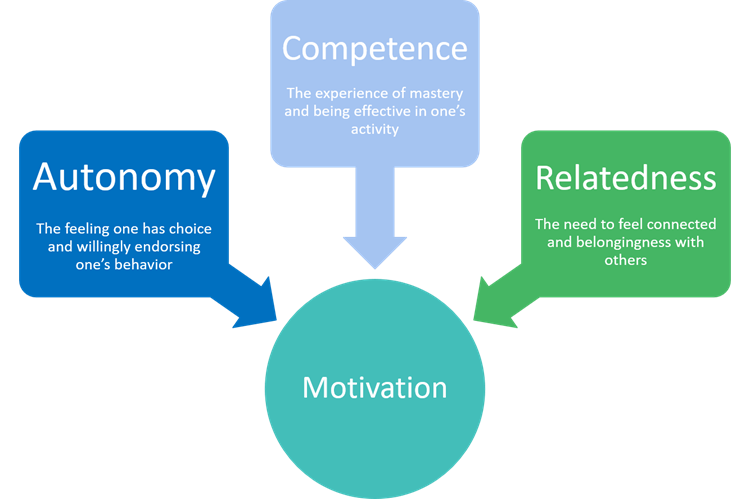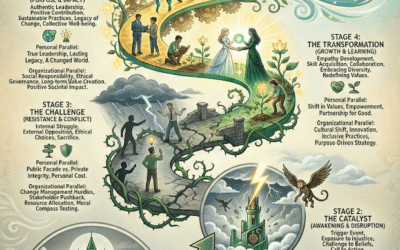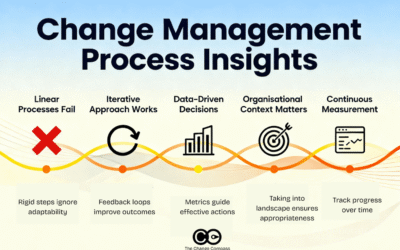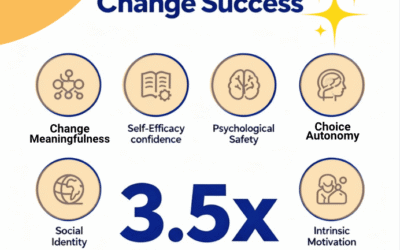Change Management is full of concepts and frameworks that are outdated and not based on empirical research. It seems that in the business world, we are very comfortable with concepts that sound like they make sense intuitively. If the concept is simple and interesting then we’re in. We don’t require them to have any scientific proof and research is often not required.
Let’s take one example. The Kubler-Ross model is one of the most popular models that outlines the 5 stages of grief a psychiatrist in the book ‘On Death and Dying’. The 5 stages are denial, anger, bargaining, depression, and acceptance. However, there is a lack of empirical research supporting these 5 stages, and in fact, research suggests other expressions of grief.
Moreover, we’ve somehow applied this model to change management assuming that it is relevant. Whilst dying is a change process, this context cannot be generalised across all other changes such as implementing a new system, a new product, or a new policy. Moreover, there is no research supporting this. We all know that there are lots of people who do not go through these phases during lots of change processes. And certainly, it would be hard to imagine someone going through these phases after buying a new desirable iPhone from a previous older model.
Now, if there are so many popular concepts that are not backed up by research what
should we use that is based on proven evidence? Self-determination theory (SDT) by
Edward Deci and Richard Bryan should be one that the change management community adopts. It is a broad-based theory about human motivation that focuses on people’s inherent growth tendencies and innate psychological needs. There has been significant research supporting this theory since the 1970s and more research is underway.

What is the self-determination theory about motivation?
The theory states that there are 3 innate human needs that if met will provide motivation, motivation to undertake tasks, to develop, and to undergo change. These 3 elements are:
1) Competence
The experience of mastery and being effective at one’s activity. When people feel
that they have the skills required to be successful they are much more likely to take
on tasks that will help them achieve their goals
2) Relatedness
The need to feel belonging and connectedness to others.
3) Autonomy
The feeling of choice and control over one’s focus.
Each of the three elements contributes to motivation, by having the right level of skills and confidence, by wanting to be connected to others, and by feeling in control over one’s focus or task.
Some implications of these 3 elements on how we manage change include:
1) Simply conducting training may not address someone’s level of competence. The outcome is that they need to feel confident. This means that there should be a
holistic focus on a range of learning interventions to promote and support confidence, such as managerial acknowledgment, catering to individual learning styles, supportive learning environment/community after training sessions, etc.
2) Change activities should not be implemented for individuals in isolation from others. For example, if learning is utilized, the change approach should be designed to provide visibility on how others are undergoing the change process, and where they are sharing their experiences. This is why change champions are so important since effective champions promote and build a supportive community
3) Especially for more significant changes, it is important to design into the change
process a sense of autonomy for those impacted. This may seem contradictory to
how most companies implement change, i.e. one that is characterized by one common set of activities for all employees. What this important to emphasise according to SDT is to build in employee involvement so that they feel that they are shaping and developing the change versus being negatively impacted by it with no choice whatsoever.

There are 2 types of motivations:
1) Controlled Motivation
• “The carrot and the stick” approach to motivating someone
• Seduced into the behaviour
• Coerced into the behavior, often with the threat of punishment
• Experience of tension and anxiety
Employees who work in a controlled motivation environment usually have negative
emotions and their confidence and well-being also suffer. Also, in this environment,
employees usually take the shortest path to reach the desired outcome. This may or may not have the best consequences for the company. If the company is trying to stipulate a set of behaviors, these may be avoided or blind-sighted to get to the ultimate ‘measure’.
2) Autonomous motivation:
• Experience of volition and choice about the work that one is doing
• If the person enjoys the work and finds it interesting, then the autonomous
motivation level increases
• If the values of the work are consistent with the values of the individual this also
increases motivation
• If the person endorses the work, then he or she will also be more motivated to
undertake the work
Organisations want more autonomous individuals that are aligned their work. Why?
Because research has found that autonomous workers are:
• More creative
• Better problem solvers and be able to think outside of the box
• Better performance
• More positive emotions
• Better psychological and physical wellbeing
So how do we promote a change environment that develops autonomous workers?
• Take the perspectives of the workers and their mindset, and be clear about what
moves them, what bugs them, what they get excited or bored about, their core
values and interests, etc.
• Providing them with choice and the ability to participate in the change and the
decision-making process where possible. This will encourage their buy-in and
engagement.
• Support them with exploring different ideas and trying new ways of approaching the work differently. This approach is also very consistent with agile ways of
working, encouraging innovation, and a ‘safe to fail’ environment.
• Encouraging them to be self-starters and self-initiated.
• Provide them with a strong and meaningful rationale of the ‘why’ of the purpose of
the change so that they understand the reasons behind the change.
Edward Deci goes on further to state “Don’t ask how you can motivate others, ask how you can create the conditions for them to motivate themselves”.

From activity-driven to design-driven
One of the biggest implications of SDT is that next time you design your change
intervention you should focus away from key standard change management activities such as communications and training. Instead, focus on creating and designing an environment from which people can motivate themselves.
This is a fundamental shift for a lot of change practitioners and requires a depth of
understanding about how the organisation functions and what will move its dial. It is not about implementing 1 or 2 core activities, it is about implementing a range of
interventions to shape the environment to support change.
Some practical ways in which you can design an environment to promote change
motivation:
1) Workshops for participants to brainstorm and discuss ways in which they can
undergo the change journey;
2) Share stories of how other employees have experienced change personally;
Use different mediums in which to communicate the change, to appeal to different
people preferences (e.g. video, online, face-to-face, posters, etc.);
3) Leverage key influencers to influence the community. Provide a sandbox or other platforms (such as an online platform, showcase room, etc.) from which employees may experience and play with the new environment;
4) Break up the change journey into small steps and milestones and acknowledge each progression;
5) Encourage community discussions about the change;
The challenge in building change environments
When we start to design a holistic environment for change, more often than not we are designing this for a set of changes and not just one initiative. In this complex, continuously changing environment, we need to be able to keep tabs on what the changing environment looks like and how it is evolving amongst the various change initiatives.
As different change environment interventions ramp up, we need to be able to visualise how these interventions and activities are impacting the employees and their environment. This includes being able to visualise the pace, scale, nature, and multiplicity of the changes across various parts of the organisation. Using data visualisation tools such as The Change Compass is valuable for organisations within agile environments.
Using the insights and core concepts from the self-determination theory will serve significant value for the change management community. Not only are its concepts well-researched and proven by research but there is a range of directly applicable implications for the change practitioner. No longer do we have to work with frameworks that are fashionable but lack the rigor of empirical research. The challenge now is how we adopt this within our change approach and ‘change the way we approach to change’.
Elevate Your Change Management with The Change Compass: Weekly Demo
Embark on a transformative journey towards unparalleled change management insights and performance enhancement with The Change Compass. Join our weekly demo and discover how a single view of change can revolutionize your approach to business performance.






